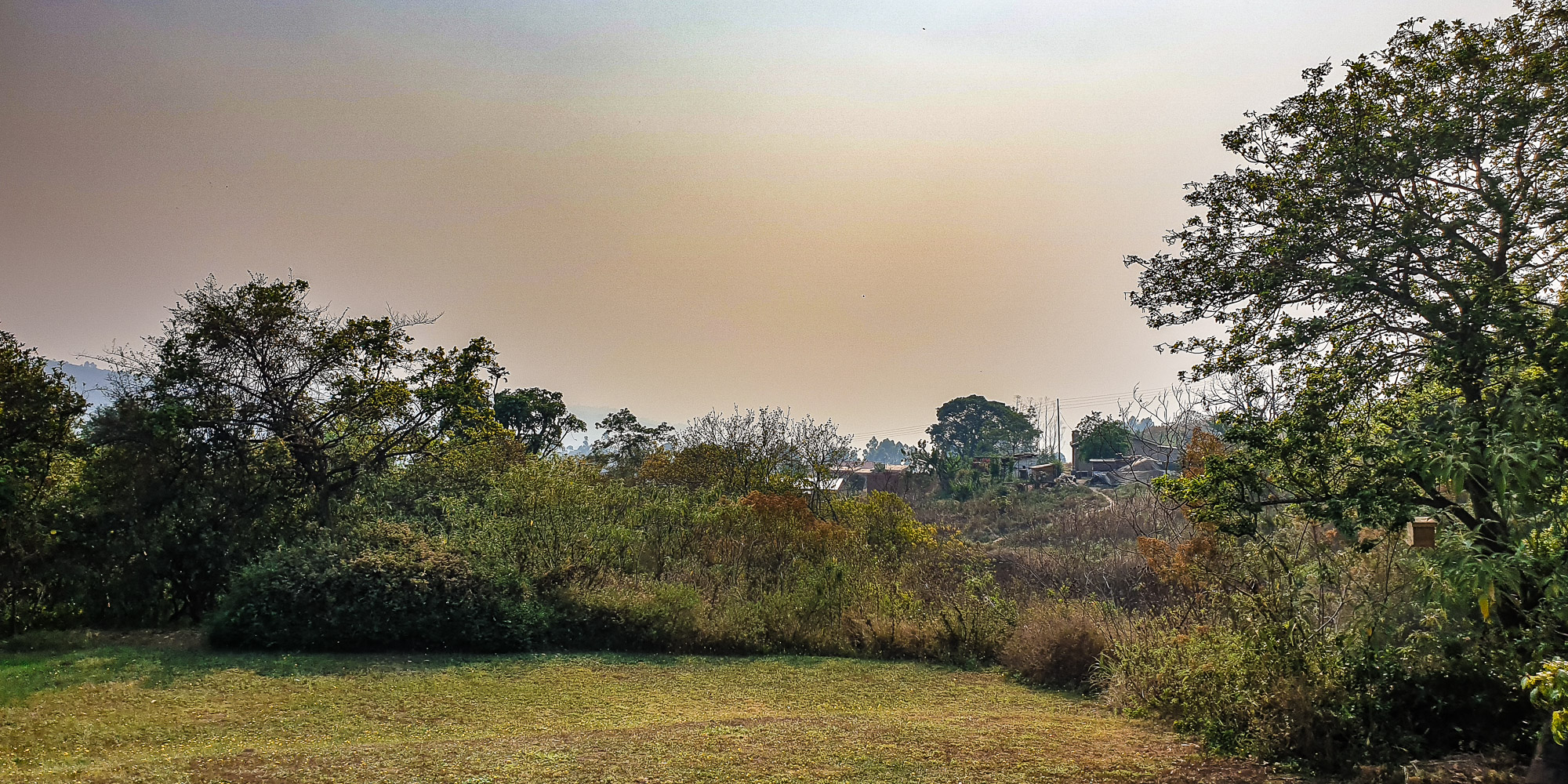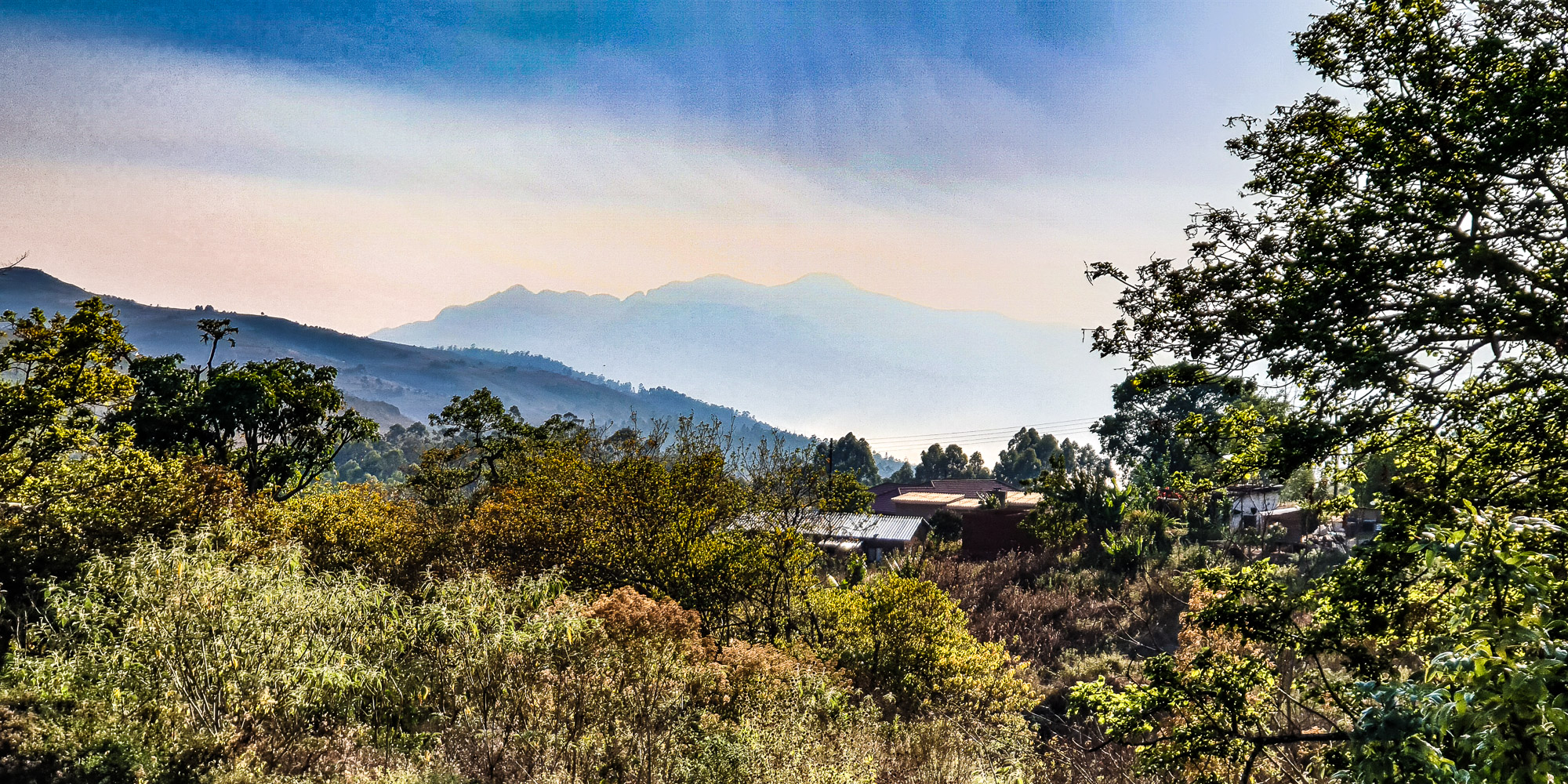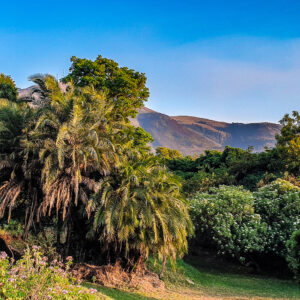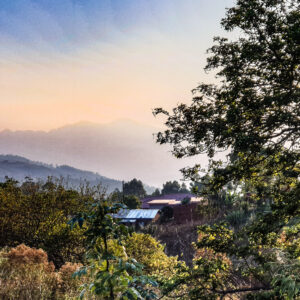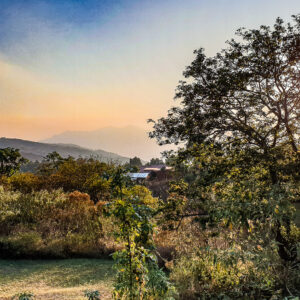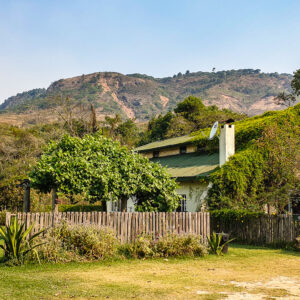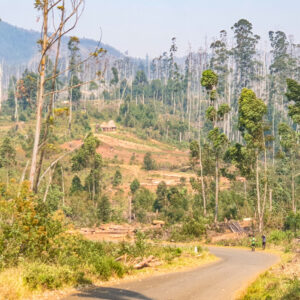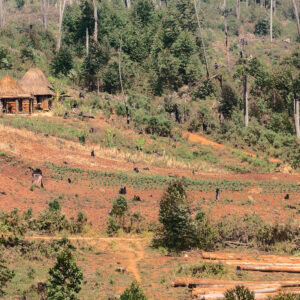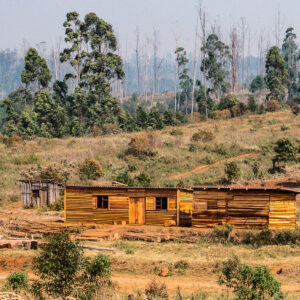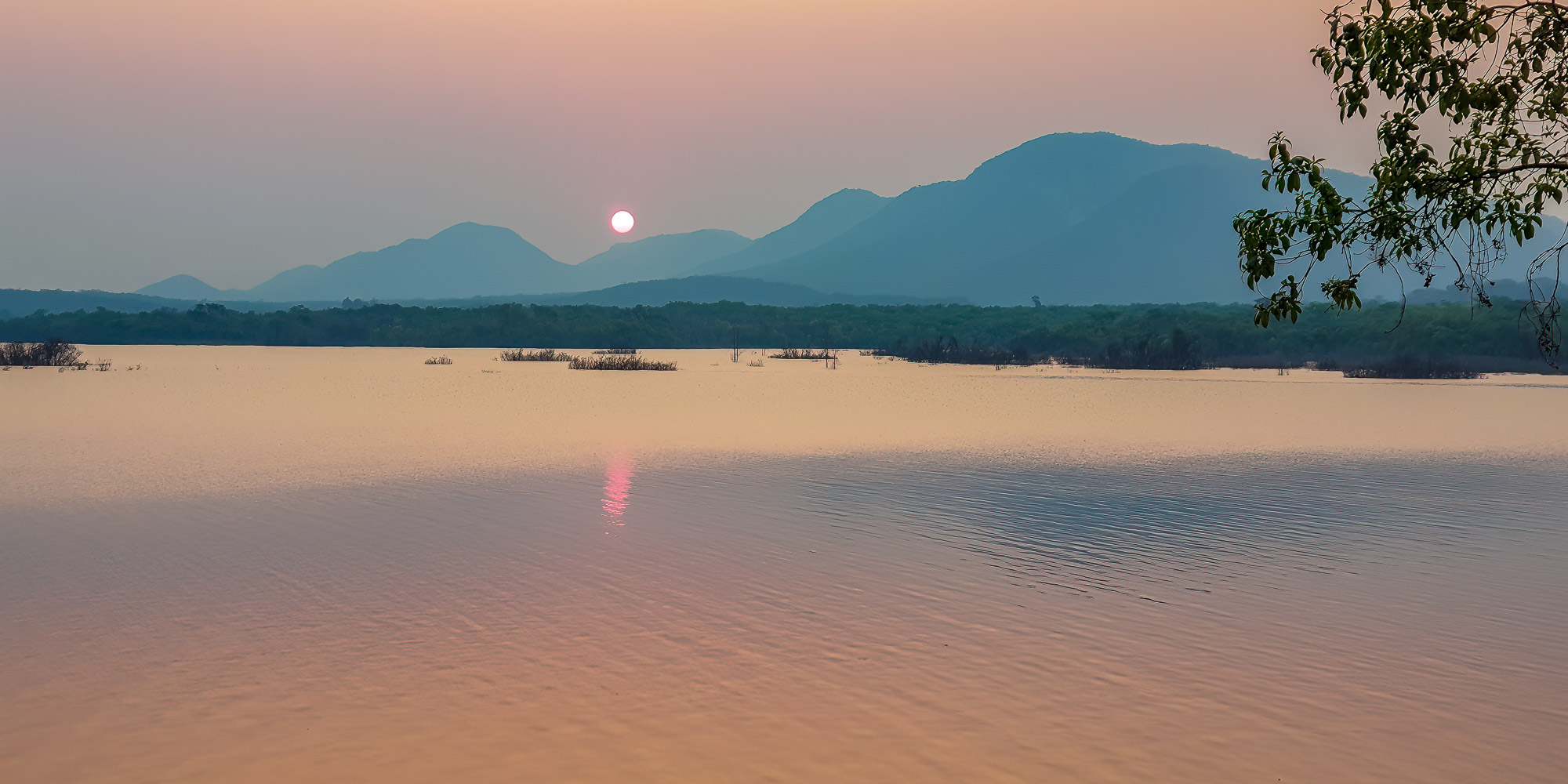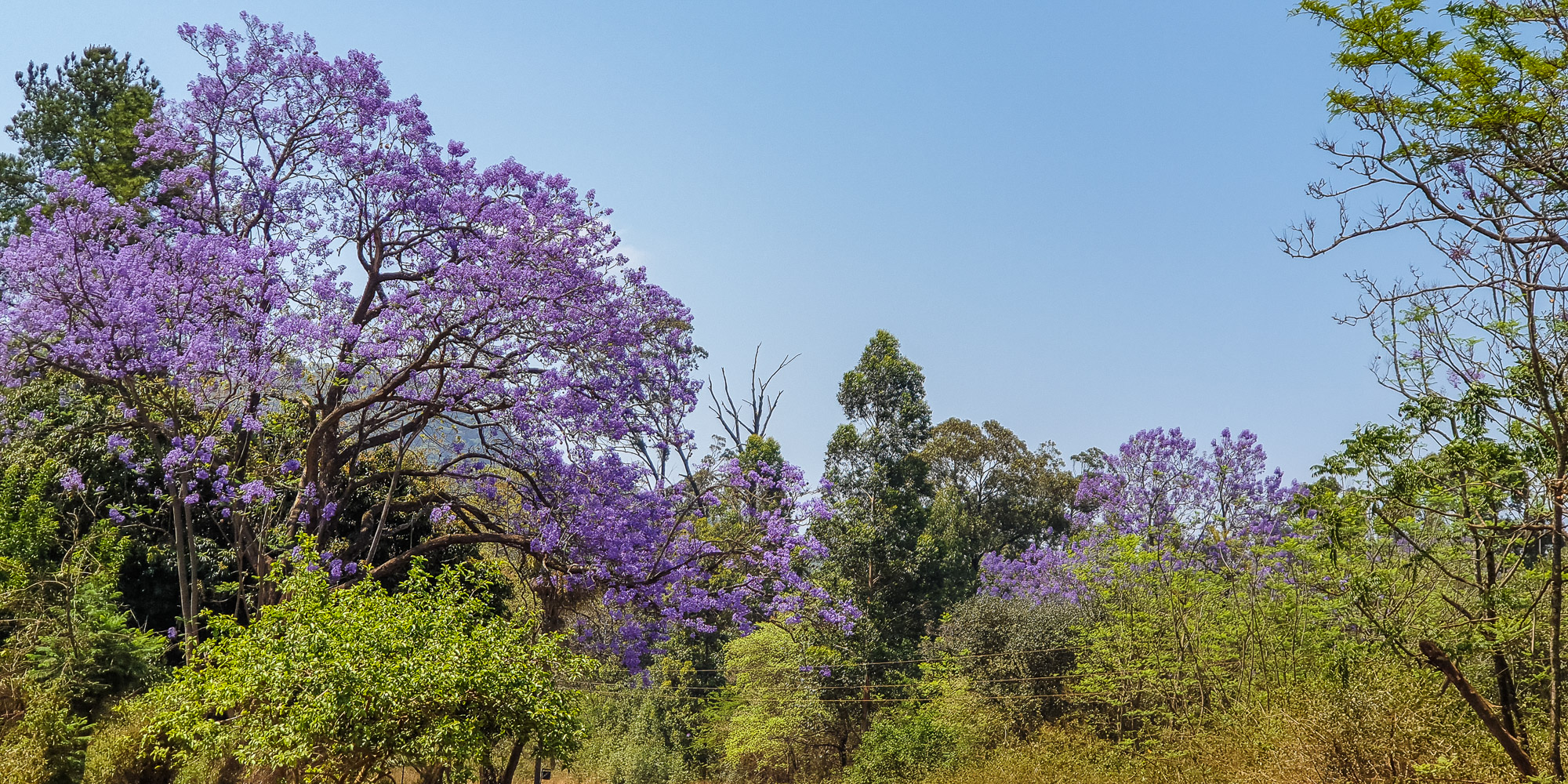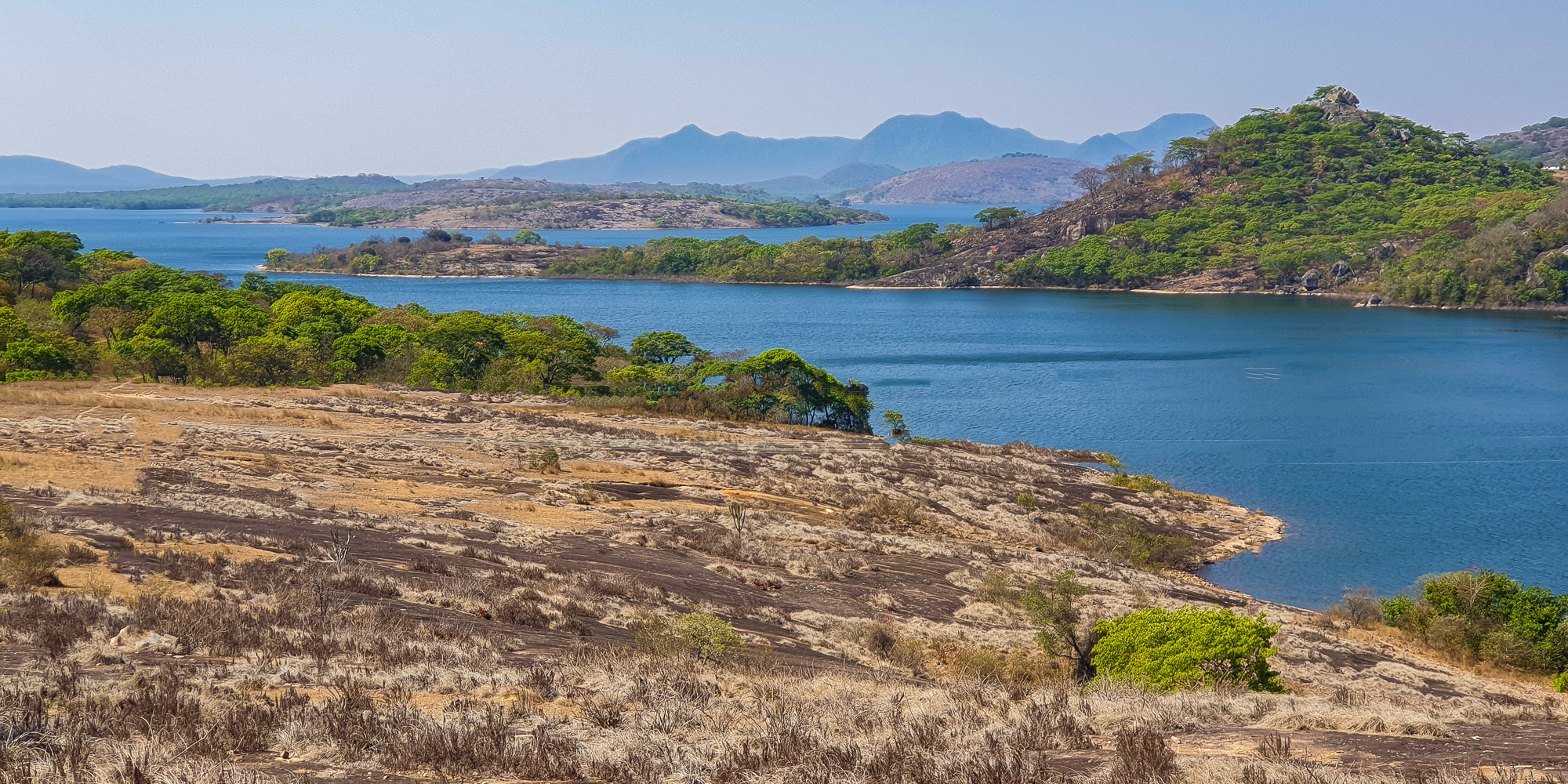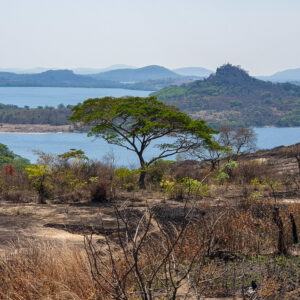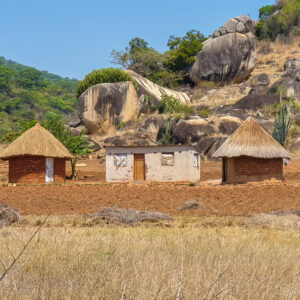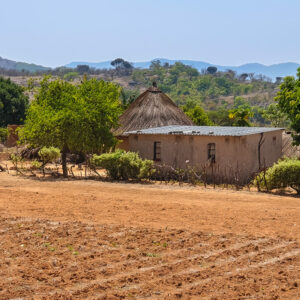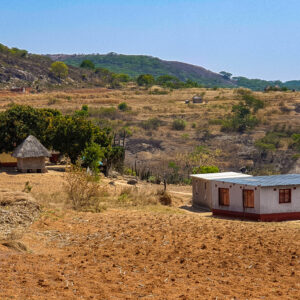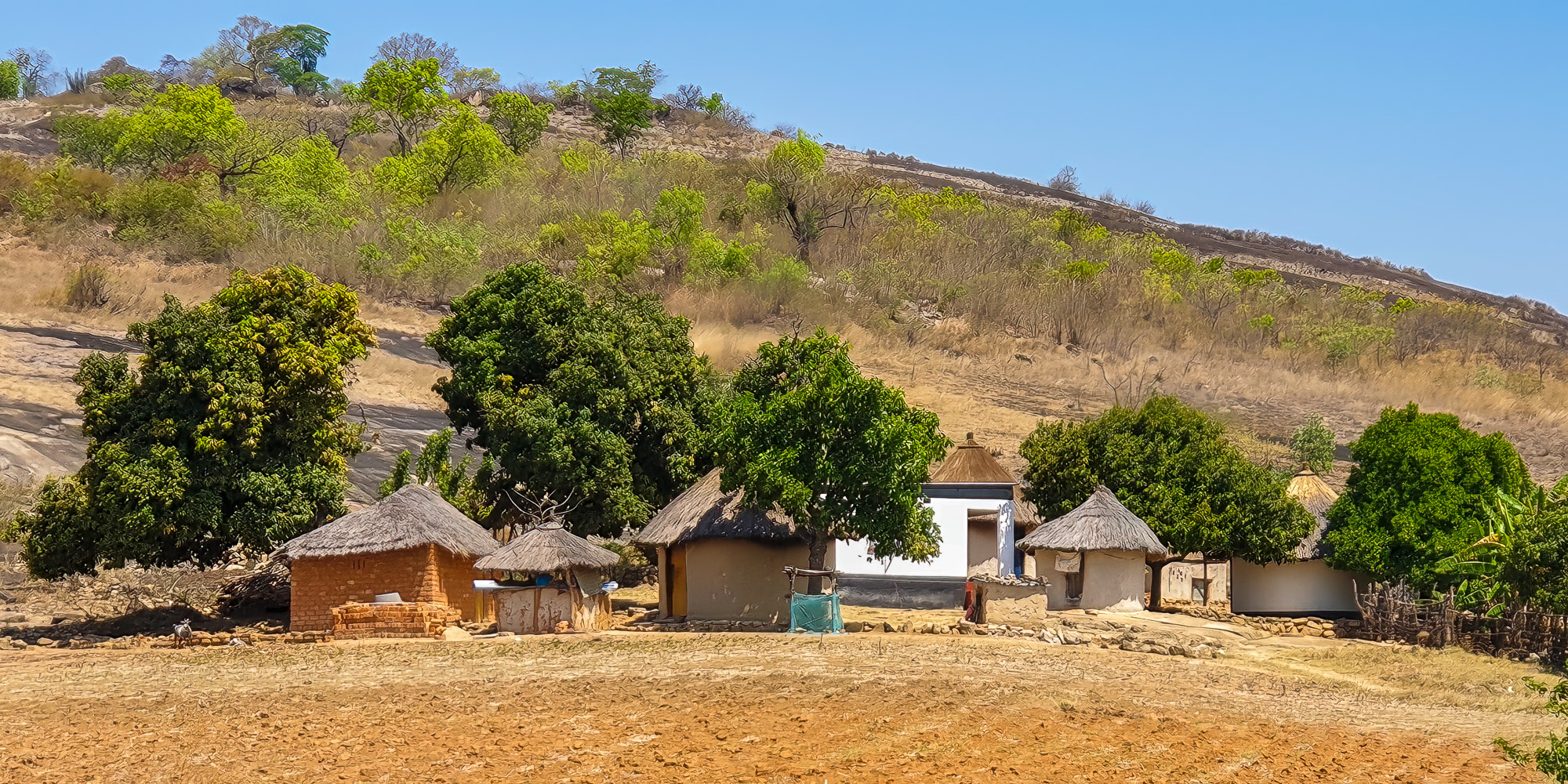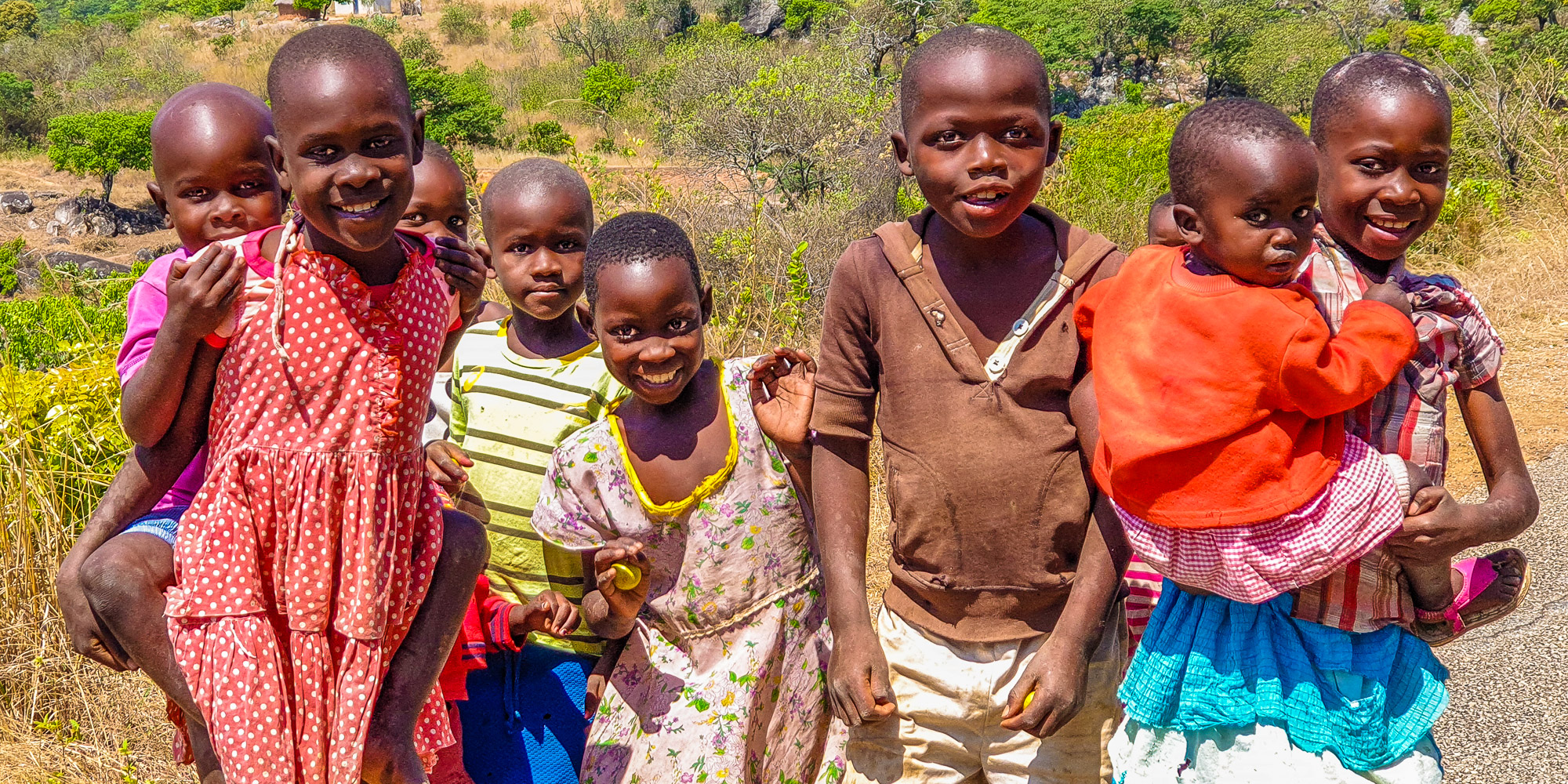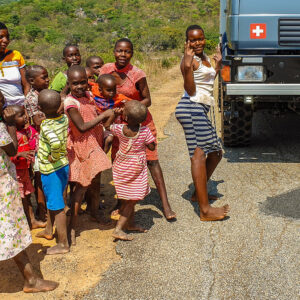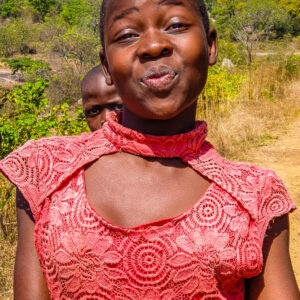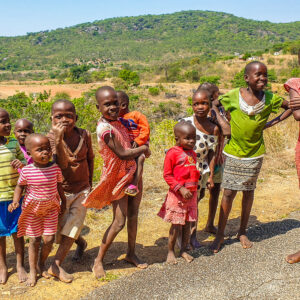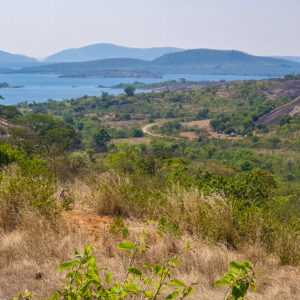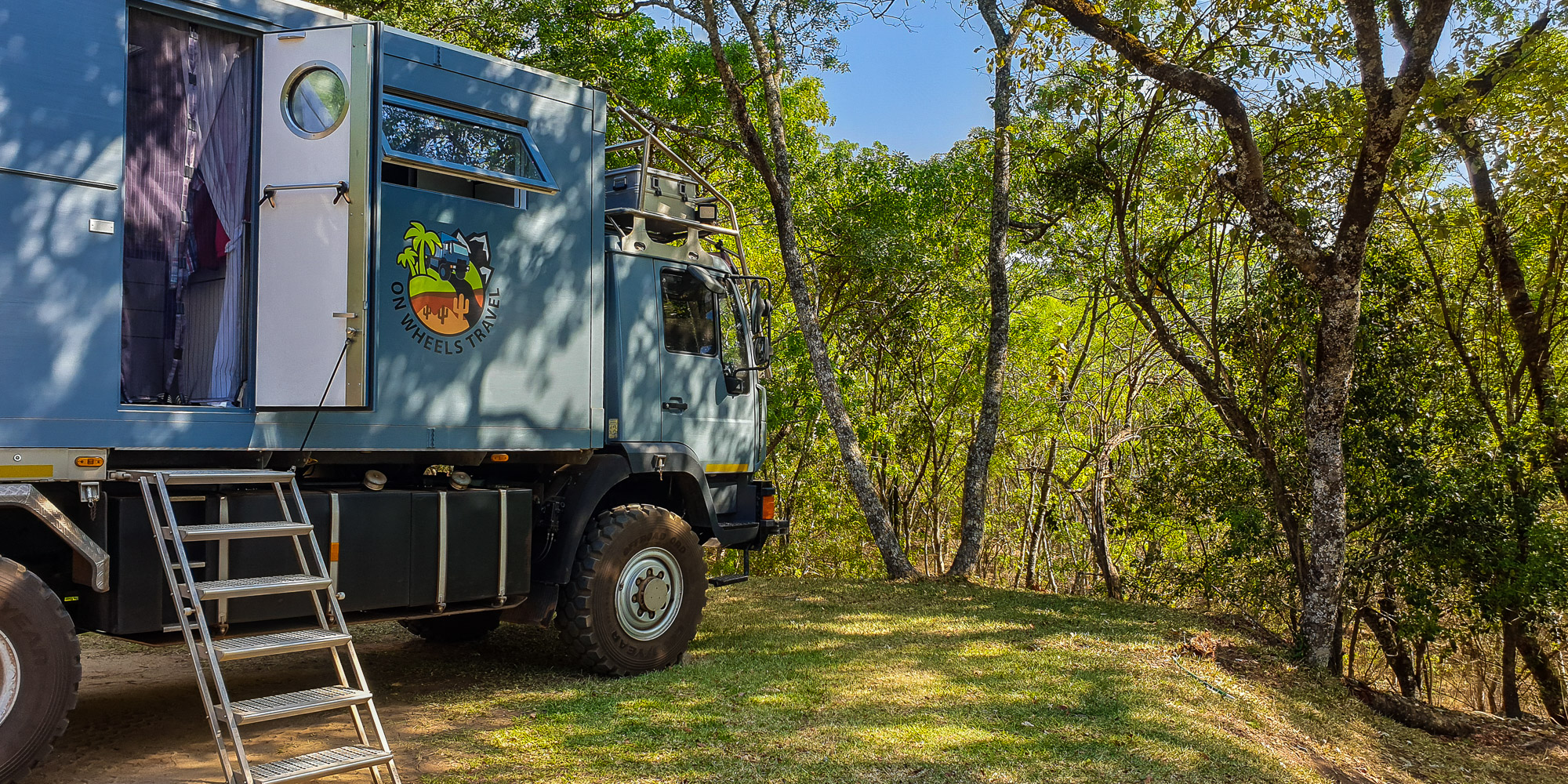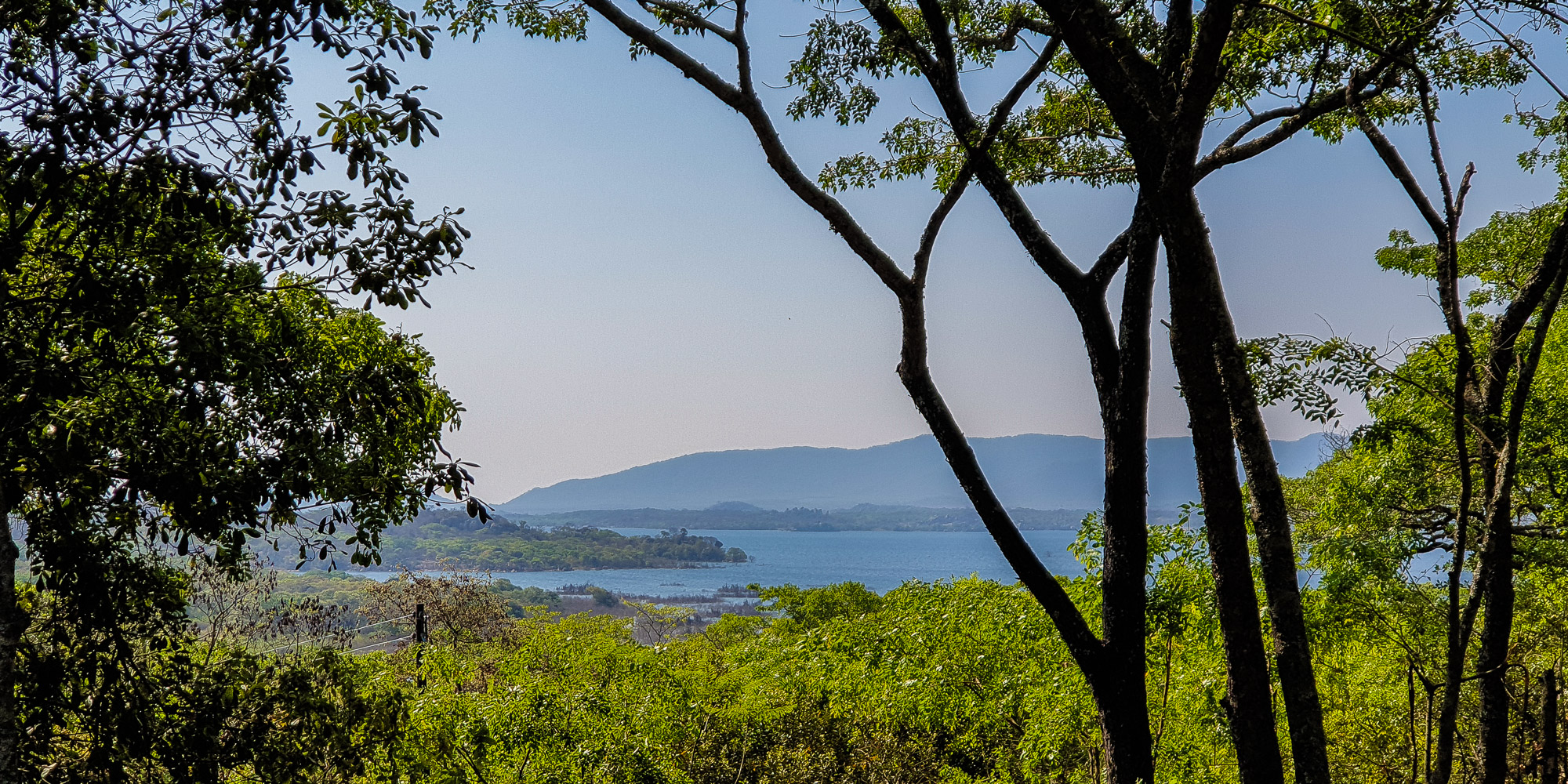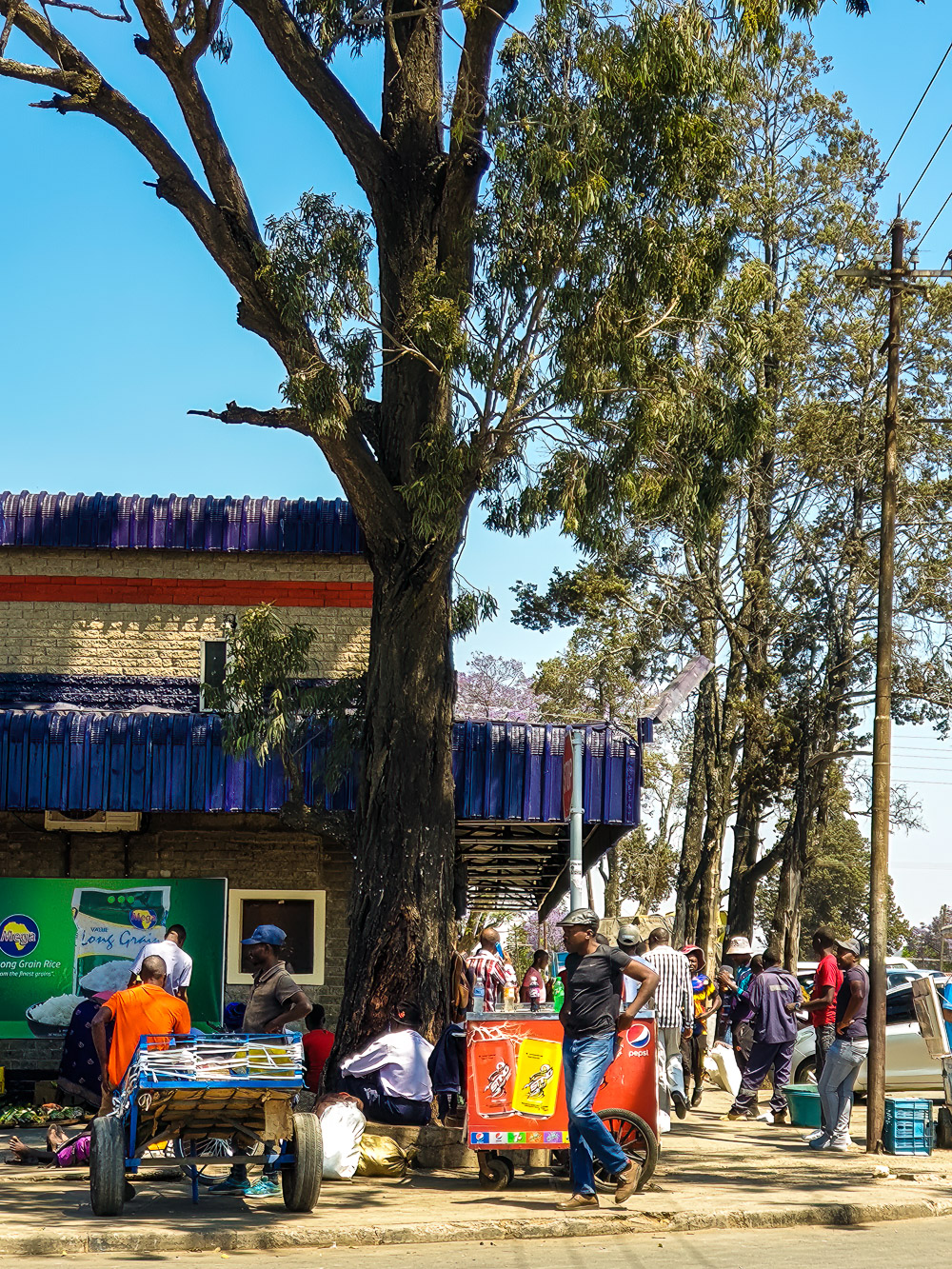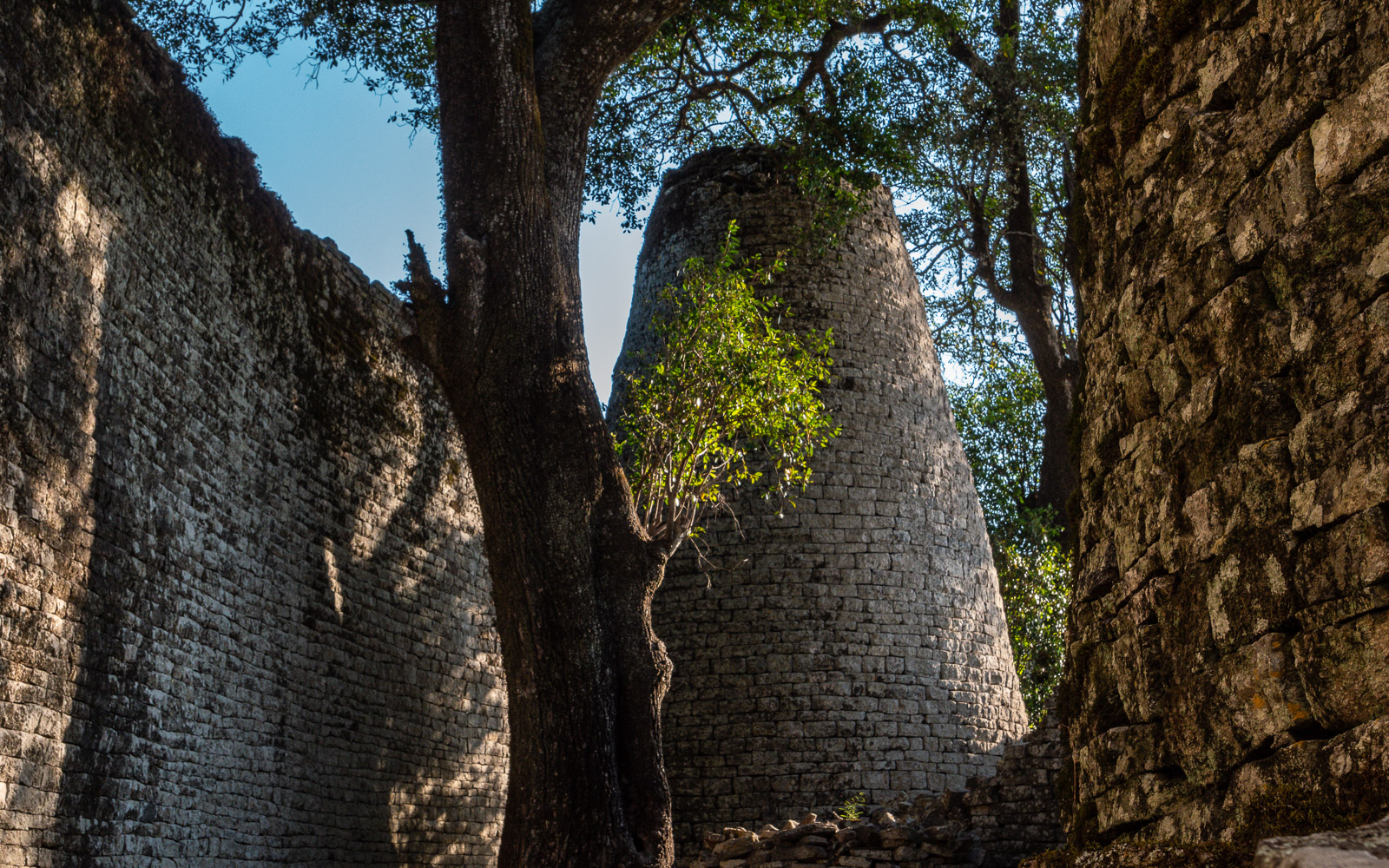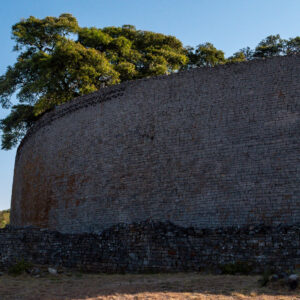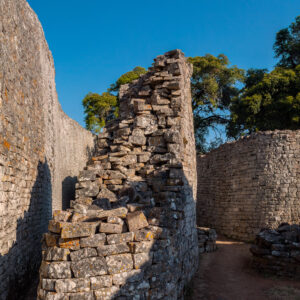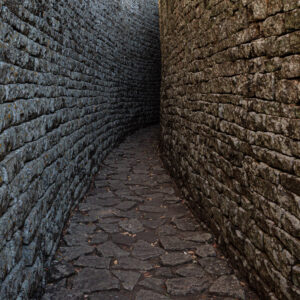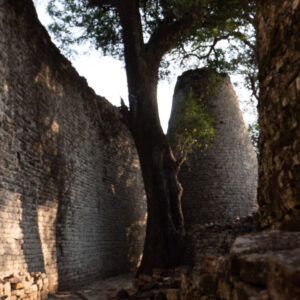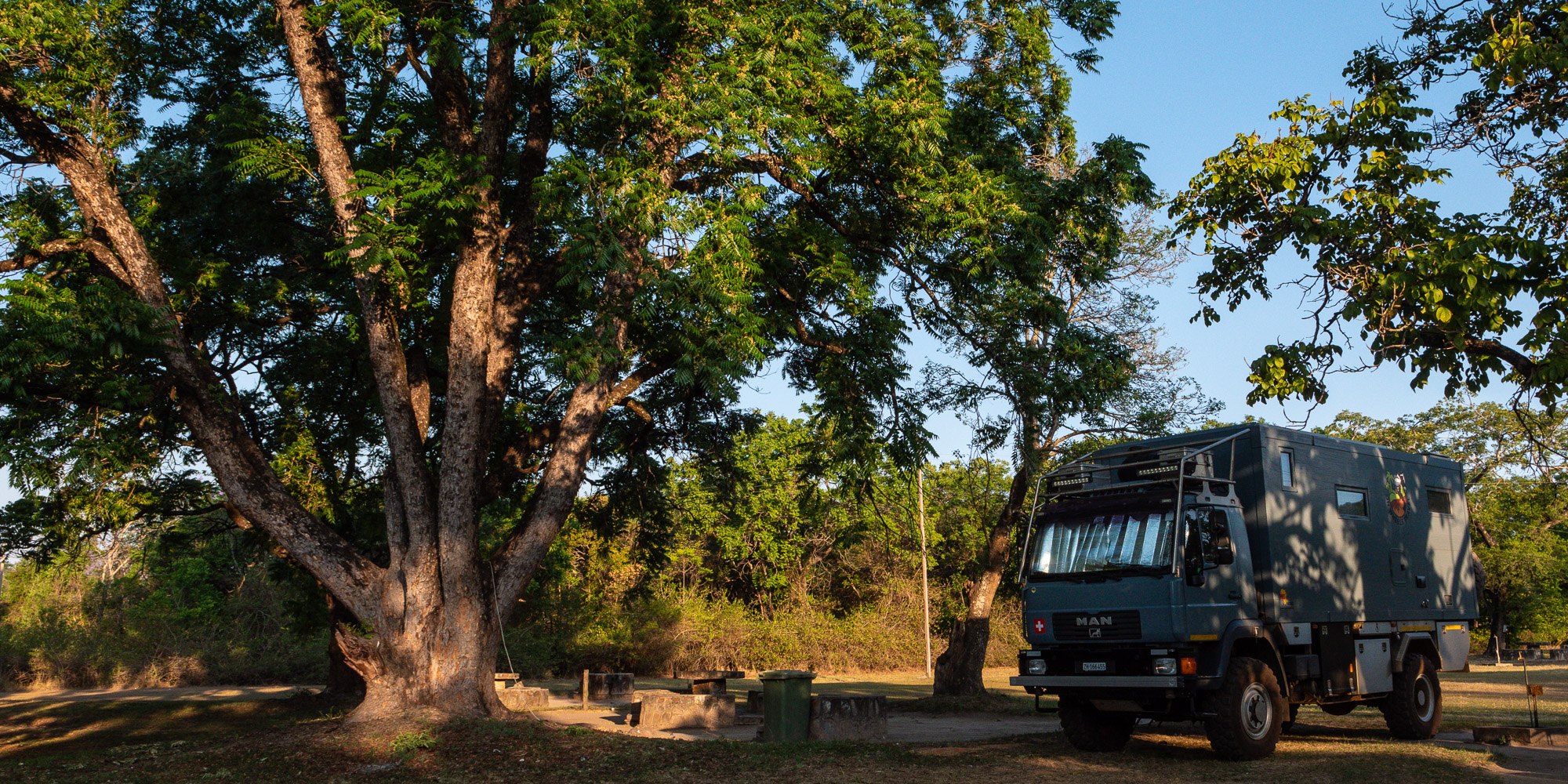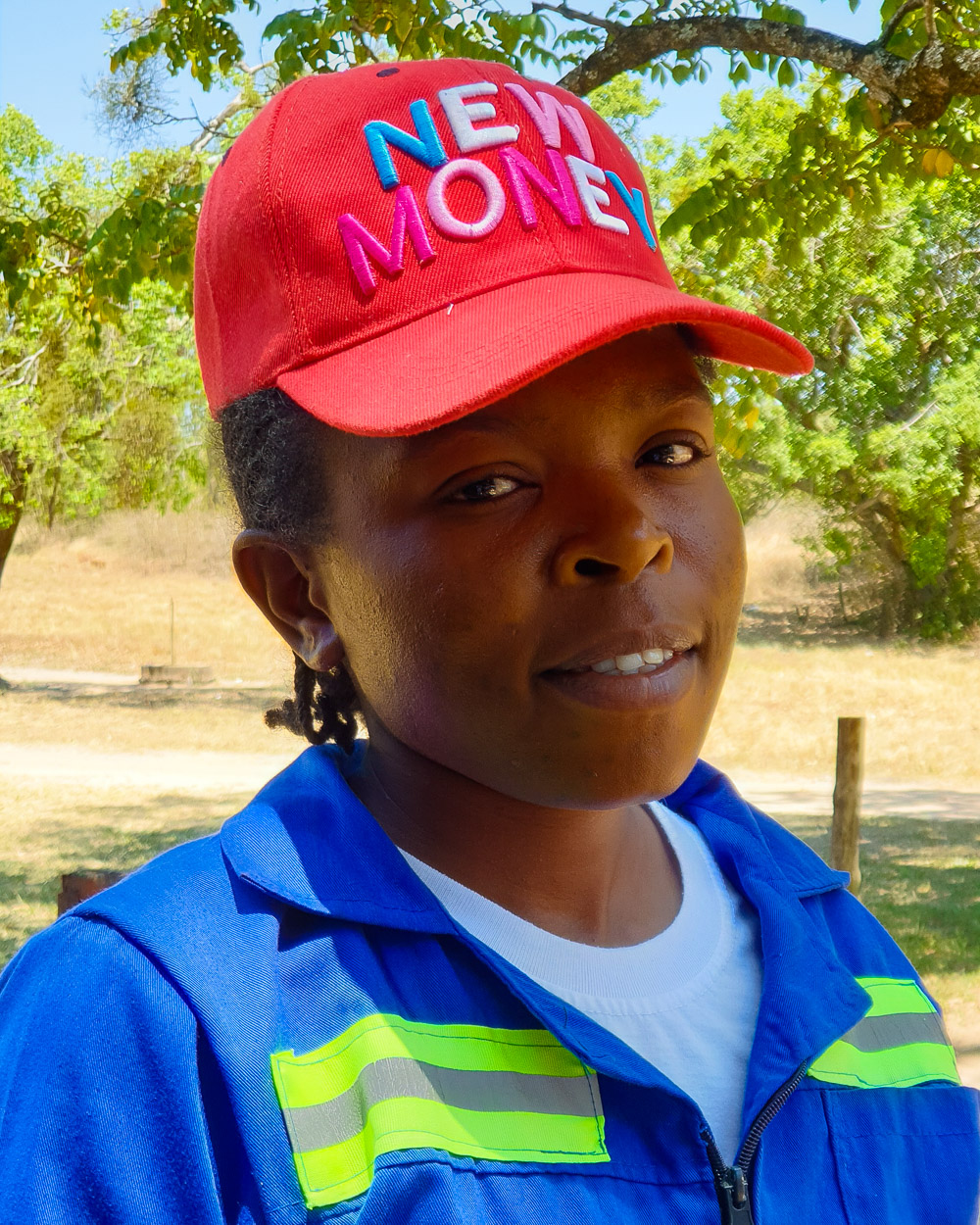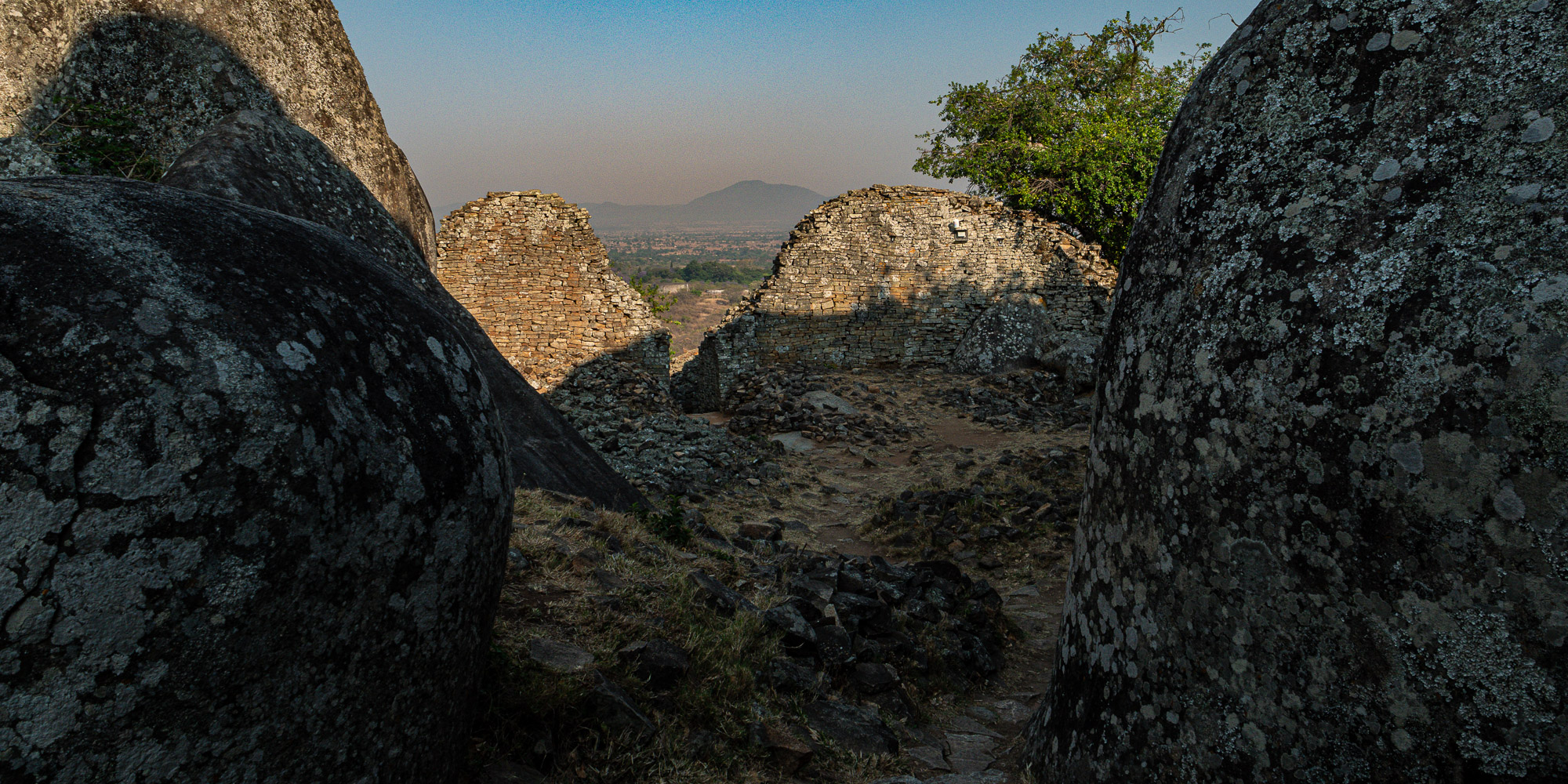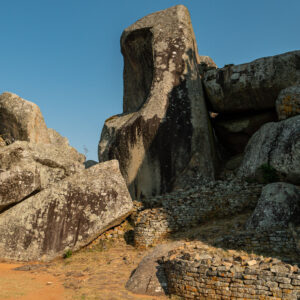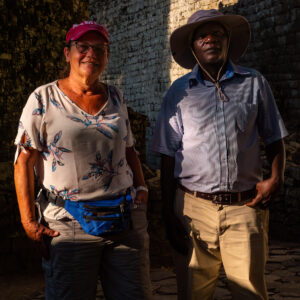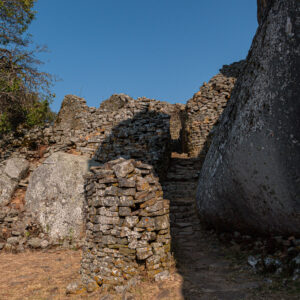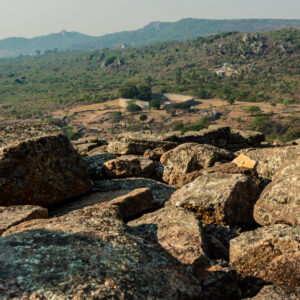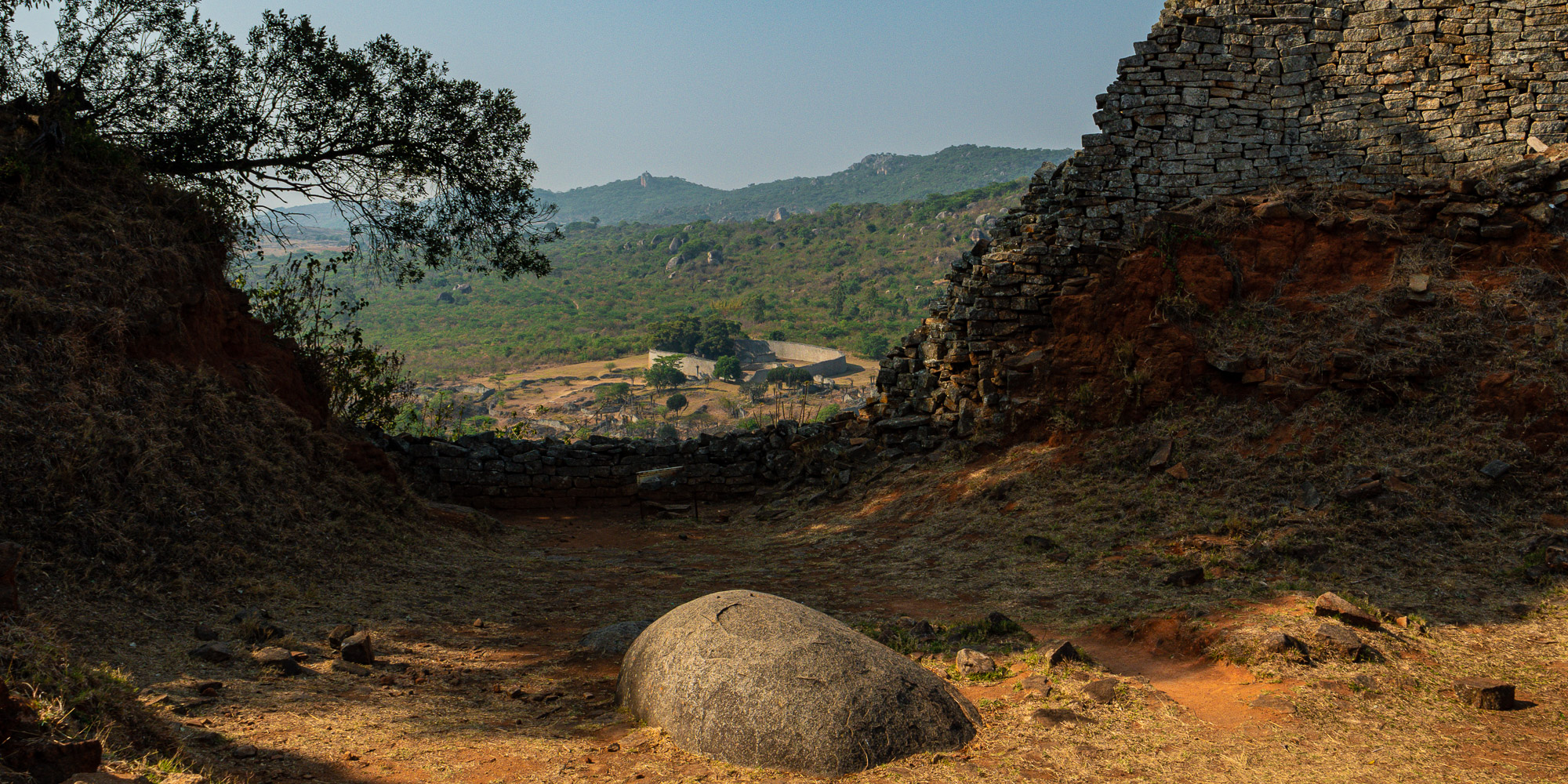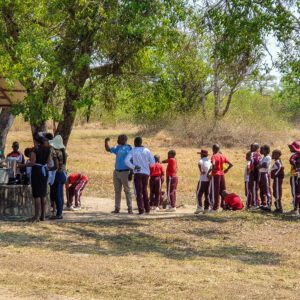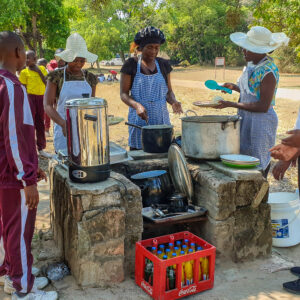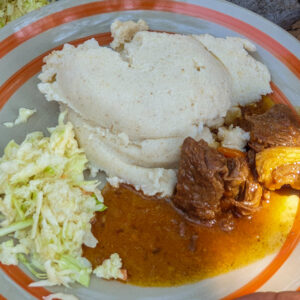Chimanimani Mountains
The Chimanimani Mountains along the border with Mozambique are said to be the “mightiest” mountains in Zimbabwe. Of course we are drawn there. As soon as we arrive, we notice that the smog from the burning of the meadows covers the entire beautiful landscape in a bluish haze. Photography is practically pointless, the whole journey is a rather gloomy experience for the eye and there is no joy.
In the village of Chimanimani, we can stand at the “Heaven Mountain Lodge” with a virtually perfect view of the mountains. However, the haze and smog is so thick that we can only make out the mountains in the mist one morning. We had planned to stay for several days and explore the mountains – but after two nights we travel on disappointed.
The journey continues again over the mountains with the highest point at around 1800m. Then through commercial forest and poor rural settlements. The road is narrow, but in very good condition. We definitely feel like we’re in Africa.
Lake Mutirikwi
Lake Mutirikwi is a reservoir, which is why it is very ramified. We follow it on narrow tracks along the southern shore and are fascinated by the rurality we encounter here. Everywhere the small homesteads of the locals and the cheerful cries of the many children as soon as they spot us. In our latitudes we would speak of urban sprawl – but here it is standard to have your own land, even if the houses and huts are very simple.
Eventually we stop to take a picture of the lake and it’s not long before we are surrounded by children from the nearby farmsteads. They want “food” – something to eat and we hand out oranges that we have bought in the country. Amazement, boldness, paired with a little shyness in the face of the unknown. But curiosity and the experience of something new win out.
We are the only campers on the well-kept campsite of the Clever Lake View Resort and enjoy two days of peace and quiet.
Bananas are an indispensable part of our diet, as they are available everywhere in Africa in a wide range of varieties and flavors. We therefore have to drive the 35 km to the regional town of Masvingo, as there were no banana sellers on our previous route.
It is difficult to capture the “hustle and bustle” in the city photographically. Nevertheless, here are some impressions.
Great Zimbabwe – Great Zimbabwe
Depending on the dialect, the name “Zimbabwe” means “big stone houses” or “honored houses”. The settlement on the plateau of the same name was the capital of the Monomotapa empire, which included parts of Mozambique as well as present-day Zimbabwe. In its heyday from the 11th to the middle of the 15th century, Great Zimbabwe had up to 18,000 inhabitants, was used as a royal palace by the rulers of Zimbabwe and was the political center of power. The wealth of the metropolis was based on cattle breeding, gold mining and long-distance trade. The Zimbabwe birds made of soapstone are evidence of the spiritual center. The complex is the largest pre-colonial stone building in sub-Saharan Africa and one of the oldest – at least according to the official version.
Around 250 such stone wall ruins have been found in Zimbabwe. Even in “Great Zimbabwe”, which we are now visiting, there are many smaller and larger ruins. The most impressive is the “Great Enclosure” – the large enclosure wall.
Despite the ongoing crisis in Zimbabwe – many people are struggling to survive – the ruins appear very well maintained and the staff are extremely friendly and courteous. We only have to pay the entrance fee once and are then allowed to stay at the basic campsite for two nights. Although there is only a shower with cold water and no electricity, we still feel very welcome here.
From left to right: Margaret at the reception, Hlengiwe head of the campsite and Ethel as a campsite worker.
In the cool of the morning, we climb up to the ruins on the rocky outcrop, the place where the king is said to have lived. The ruins themselves are not very impressive and unfortunately the view is again obstructed by haze and smog. Nevertheless, the view is tremendous. and the fortress up here was practically impregnable, apart from the lack of water, which had to be laboriously carried up.
The picture above shows the “Big Enclosure”. While the ruler is said to have lived up here on the hilltop, his 200 or so wives are said to have lived below, in the large walled enclosure.
A critical remark is permitted. If this kingdom was really capable of building such beautiful and high walls, why were the huts of the people living inside the walls mud huts with thatched roofs? The explanations and more recent research would have us believe that these complexes were built by earlier empires of today’s indigenous population. But couldn’t it be that a completely different culture prevailed here before?
School attendance
We would like to tell you about an impressive experience at the campsite in Great Zimbabwe. Several schools visited the ruins while we were there. They were all very decent, friendly and disciplined. The students’ encounter with us was a heart-warming experience.
They were also served lunch, and it was also a very orderly affair. As we were later told, the aftermath of the more than successful Rhodesia in the period before Mugabe’s land reform.


